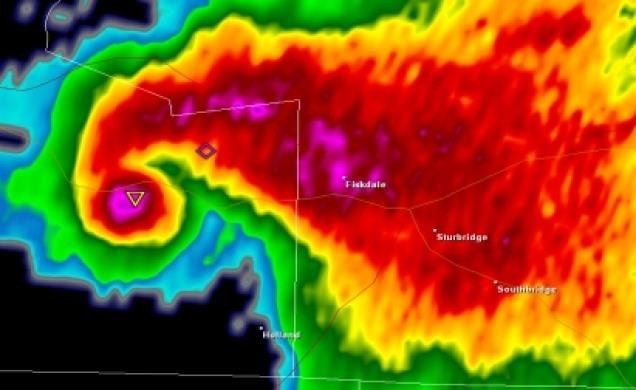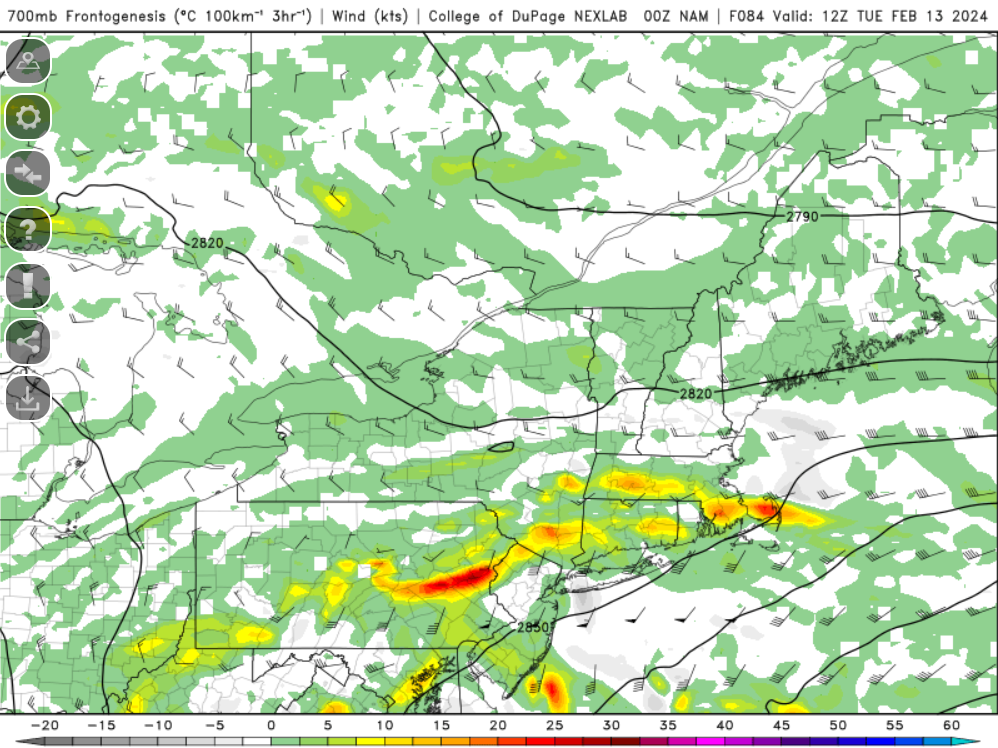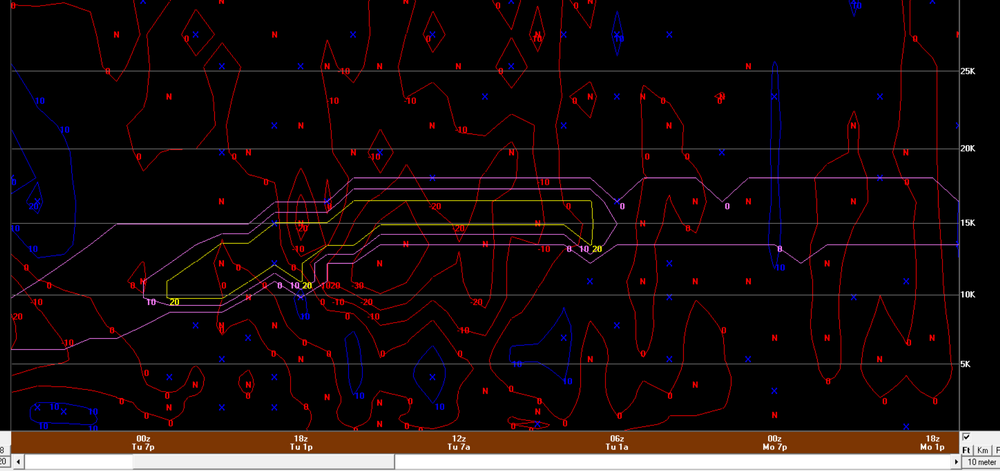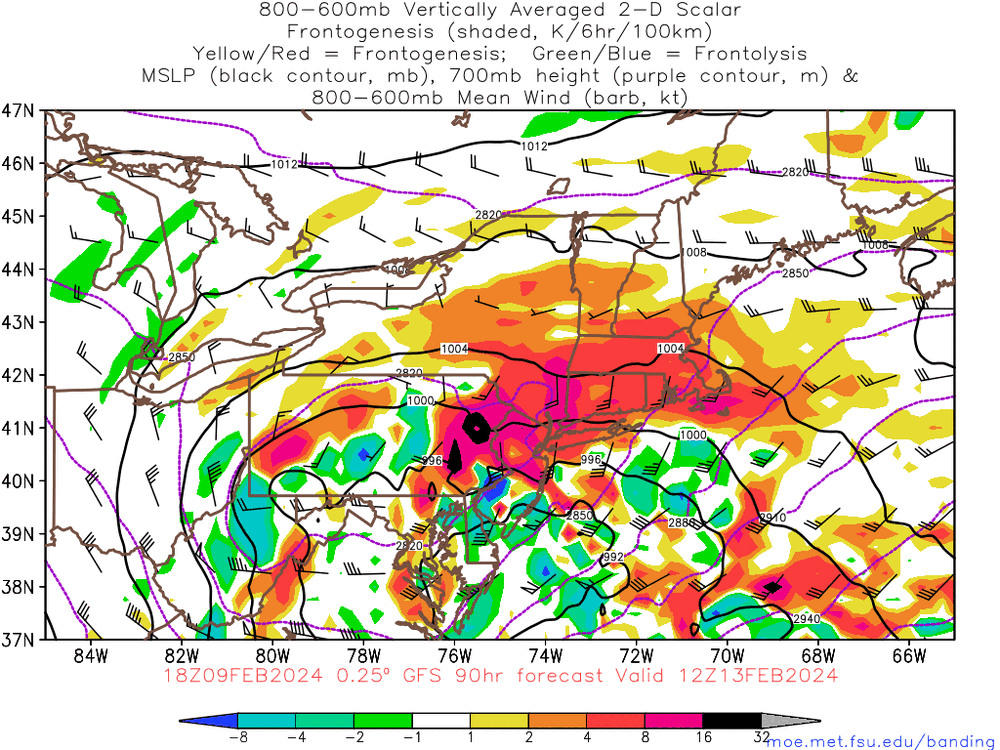-
Posts
78,285 -
Joined
-
Last visited
Content Type
Profiles
Blogs
Forums
American Weather
Media Demo
Store
Gallery
Everything posted by weatherwiz
-

It was a Flop... February 2024 Disco. Thread
weatherwiz replied to Prismshine Productions's topic in New England
Tomorrow is going to be a fun day. With temperatures around 60 I'm going to sit outside and watch the Bruins game...all while tracking a big snoowstorm...love it!! -
The SGZ can vary. The snowgrowth zone is denoted within the level of the atmosphere in which temperatures range between -12C and -18C. This is the temperature rage where the best dendrites are produced. So in a colder airmass, the bottom of the snowgrowth zone will start at a lower height level within the troposphere. So you're seeing the SGZ lower there because the airmass is getting colder. Yes, time goes right to left.
-
the purple/yellow box denote the snowgrowth zone (I always forget though what the difference between the purple/yellow are). The red contours are omega (rising motion). you want the best omega right within the snowgrowth zone (crosshair signature). This is a great signal for heavy snow with intense rates.
-
The speed of the storm could certainly be a factor in obtaining those higher ranges. That always needs to be factored in when thinking go big or go home type ordeals. Not setting that potential into stone yet, but something I think is viable if everything falls together correctly. IDK...probably more likely it can be discounted but I'm not going to do so just yet. I'm giving until 0z/6z guidance before totally dismissing it. I mean even at this stage we're seeing large spread within the northern stream and still some differences with the southern stream.
-
The changes in the evolution of both the northern stream and southern stream over the past 24 hours have been astonishing. With the way this looks now I would not be surprised if the deform band ended up farther north than guidance is pinging currently. I guess one thing we really need to hope for too is that southern stream amplifies or digs as so otherwise this could turn into an ugly strung out ordeal very quickly. I am a bit nervous with how things have trended speed wise. Expectations still in check for now.
-
Been trying not to have much in the way of excitement or expectations for this yet given how much uncertainty there has been but looking over things this morning I am starting to get quite excited. Still lots to iron out and I hope we get some more consistency but you can't hate what the past 24 hours have looked like in the modeling field.
-
This is a great point, but this also raises conflict. If you're discussing this stuff taking a scientific approach, you can't have a million definitions and criteria otherwise there is just mass confusion. I suppose though having a ton of different definitions is fine, but the criteria needs to be established and there also needs to be sound reasoning.
-
True...to some extent the ocean can certainly give the Midwest a run with the winds. I would love to experience a true Midwest blizzard though, I would have to think its something that would be more epic than what we ever see here. I mean how often do we see portions of 84/91/95 close due to a winter storm? Portions of I80, I90, I94, I29 will close multiple times per winter and sometimes for multiple days. Conditions just get too dangerous to even have plows going out.







